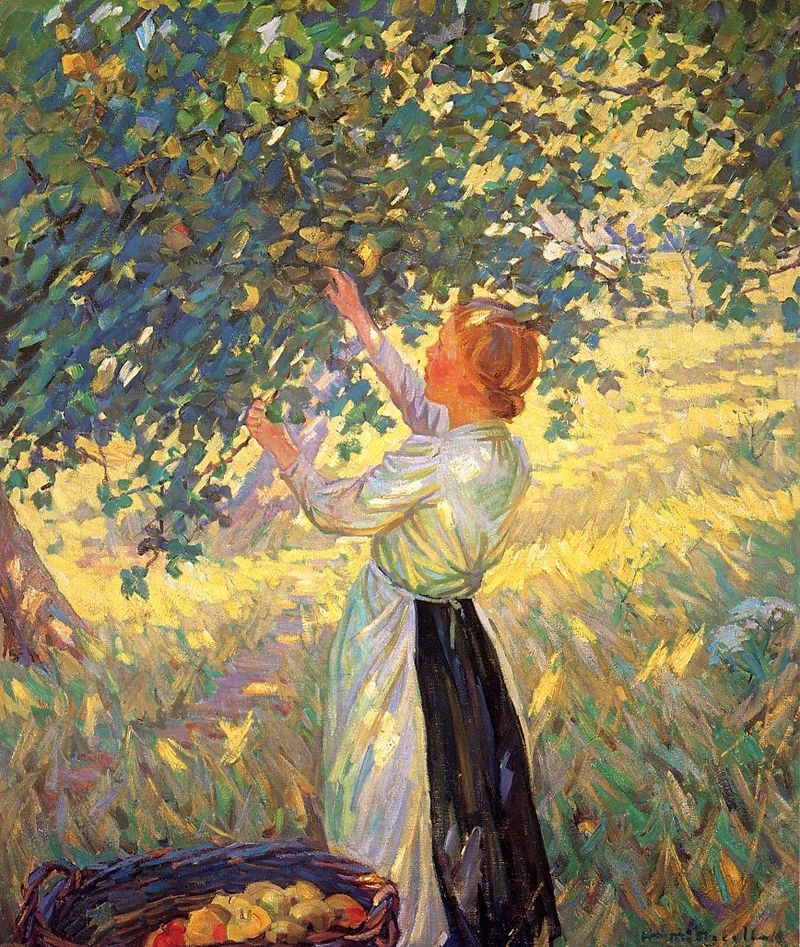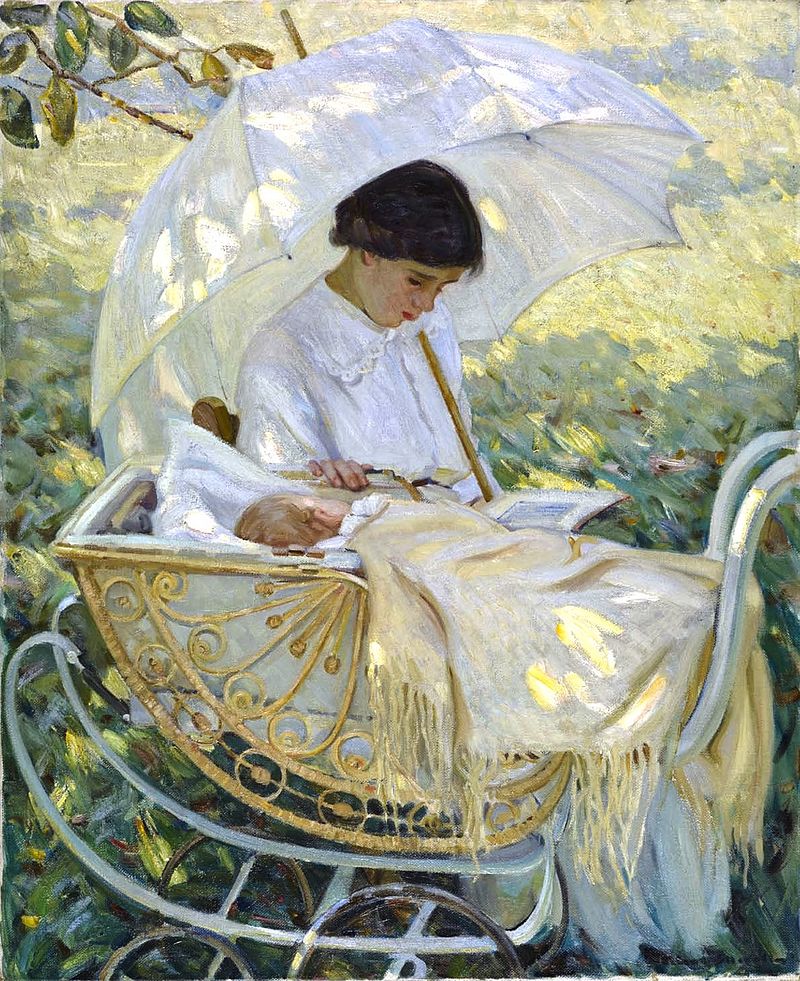Helen Galloway McNicoll (1879-1915) was a Canadian Impressionist painter known for her contributions to the art world during the early 20th century. She is particularly recognized for her depictions of landscapes, portraits, and scenes of women and children, which displayed a strong sense of color and light.
- Early Life and Education: Helen McNicoll was born in Toronto, Ontario, Canada, and grew up in a family that valued culture and education. She showed an early interest in art and attended the Art Association of Montreal’s school at the age of nineteen.

- Move to England: In 1902, McNicoll moved to England to further her artistic training and became associated with the New English Art Club, a group of progressive artists. She studied at the prestigious St John’s Wood Art School in London.
- Impressionist Style: McNicoll is often associated with Impressionism, a style characterized by the use of light and color to capture the transient and atmospheric qualities of a scene. She was inspired by the works of the French Impressionists and developed her own style influenced by their techniques.
- Subjects and Themes: McNicoll’s work often focused on outdoor scenes, particularly gardens, landscapes, and beach scenes. She had a particular affinity for painting women and children in everyday settings. Her paintings of young girls often convey a sense of innocence and simplicity.

- Exhibitions and Recognition: Helen McNicoll’s art was exhibited in various prestigious galleries, including the Royal Academy in London, the Paris Salon, and the Canadian National Exhibition in Toronto. She received critical acclaim for her work and won several awards during her career.
- Return to Canada: McNicoll returned to Canada in 1913 due to health issues. Despite her declining health, she continued to paint and exhibit her works. Her art remained an inspiration to the Canadian art community.
- Early Passing: Tragically, Helen McNicoll’s life and promising career were cut short when she succumbed to complications related to diabetes at the age of 35 in 1915.
Helen McNicoll’s legacy continues to be celebrated in Canada, where her Impressionist works are appreciated for their contribution to the development of Canadian art. Her ability to capture the fleeting effects of light and her sensitive portrayal of her subjects make her an important figure in the history of Canadian art.





